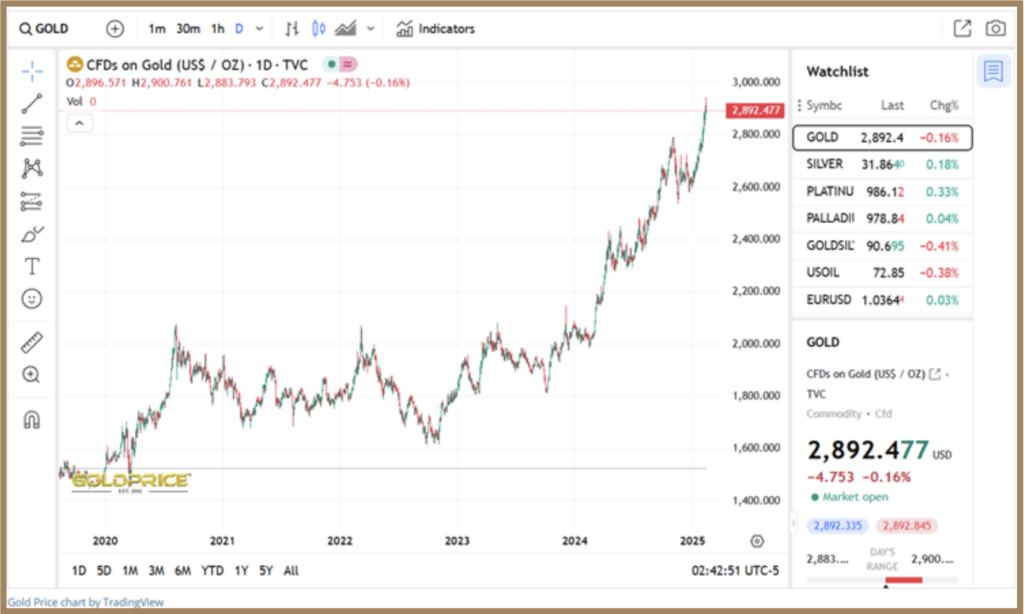INVESTMENT COMMENTARY
|
FEBRUARY 2025
2025 SO FAR
When we wrote to you in January, we predicted another year of thick and fast news flow. To some degree, the inauguration of Donald Trump as US President made this an inevitability. The immediate signing of dozens of Executive Orders implementing trade tariffs, deportations, withdrawal from the WHO and Paris Agreement makes his administration’s aims clear. At the time of writing, Trump has signed 56 Executive Orders in his first three weeks as president (www.nbcnews.com), more than the sum of Ronald Reagan, George Bush, Bill Clinton and George W Bush during their entire presidencies. Some will be more impactful than others globally and geopolitically, but the clear message from the Trump administration – which was clearly signposted – is that it intends to put America first.
Following a stellar year for US and Japanese equities in 2024, it was time for European and UK equities to lead the charge in 2025. Both the Eurostoxx50 and FTSE100 made new all-time highs as investors looked discerningly for more attractive valuations. This was paired with a significant wobble in US technology stocks as the Chinese unveiled DeepSeek, an AI ‘large language’ platform which its developers claim was created for a fraction of the cost of that spent by Silicon Valley in recent years. We wrote about Nvidia’s meteoric rise in last August’s communication. But such a parabolic rise in share price – on expectations of strong future earnings – can often leave share prices vulnerable to brutal retracements. On January 26th, Nvidia lost $589 billion of its market capitalisation (this is akin to AstraZeneca, Shell and HSBC all being valueless in one trading session) with other technology stocks adding losses which totalled in excess of $1 trillion as part of the broader sector-specific malaise. Some commentators have attributed the sell-off triggered by DeepSeek to market abuse, others to the stretched valuations of hitherto unprecedented stock price rises. Whatever the reasoning, this highlights to us as investors that while we must remain invested in sectors in which the secular bull markets is so strong, we must also take heed of the volatility such sectors can exhibit which is why we remain sectorally and geographically diversified.
Despite CPI (core inflation) creeping higher across the developed world (US, Europe, UK and Japan), both the European Central Bank and Bank of England took the decision to cut interest rates in January. The cut in the UK base rate to 4.5% (from 4.75%) follows a sharp contraction in GDP growth expectations. Following a tricky initial six months for the new UK government – which has pushed long-term borrowing costs to their highest level in several decades – the rhetoric is now becoming more positive, which has reinvigorated demand both for UK gilts and sterling which had suffered against the dollar in the second half of 2024.
Now that Trump is properly ensconced in the White House, the Federal Reserve (the US central bank) is expected to follow suit at either February or March’s meeting, although they have signalled the rate of cuts is likely to be somewhat slower than anticipated.
Much of this potential procrastination regarding interest rate cuts in the US is down to the threat of inflation. The combination of Trump’s electoral promises: trade tariffs, tax cuts, deregulation and immigration control, are likely to impact numerous contributory factors insofar as prices are concerned. It seems a given that the Trump
administration will reinstate the tax cuts from his first term in office. Looser regulations should encourage corporate activity and private investor interest.
Deficit spending is also a concern amongst US investors; one which Elon Musk’s appointment as head of the Department of Government Efficiency will look to help control. US borrowing is, like many developed countries, as high as it has ever been. However, the scale of US borrowing is incredible when considered objectively. US national debt now approaches $36.5 trillion (www.usdebtclock.com) which, by any metric, is staggering. Trump’s appointment of Scott Bessent as Treasury Secretary shows pragmatism. Mr Bessant is a market-focussed hedge fund manager who will be aware of the insidious threat of re-inflation and its potentially ominous effects on US economic growth. Mr Bessant appears ambivalent about some tariffs, particularly in the context of the post-WW2 Marshall Plan, in the expectation they will make internal spending more attractive.
GOLD
We could not finish our note without a focus on the ‘yellow metal’. Throughout modern history, gold has been an intrinsic store of value throughout periods of inflation, uncertainty and, in recent years, the systematic devaluation of fiat currencies. The election of Donald Trump pulls all of the aforementioned uncertainties into play.

The above chart provides an illustration of the gold price over the course of the last five years.
One of the main contributing factors has been emerging markets aiming to reduce their reliance on the US dollar. The World Gold Council reported that central bank gold demand exceeded 1,000 tonnes for the third consecutive year in 2024.
Ongoing geopolitical tensions, including conflicts in Eastern Europe and the Middle East, have contributed to economic instability. Additionally, concerns over potential inflation due to expansive fiscal policies have made gold an attractive hedge for investors. Collectively, these factors have propelled gold prices to unprecedented levels, underscoring its enduring appeal as a store of value during times of economic and political uncertainty.

